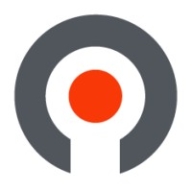

Jitterbit Harmony and Declarative Webhooks compete in the integration and automation space. Jitterbit Harmony shows an advantage in pricing and support, attracting cost-sensitive buyers, while Declarative Webhooks stands out for its robust features, appealing to those prioritizing functionality over cost.
Features: Jitterbit Harmony provides a comprehensive suite of integration capabilities, API management, and process automation tools. Declarative Webhooks delivers a streamlined automation experience emphasizing event-driven workflows. It is particularly effective in managing complex webhooks scenarios, distinguishing it from competitors.
Ease of Deployment and Customer Service: Jitterbit Harmony offers an established deployment process with comprehensive documentation and support channels for smoother setup and issue resolution. Declarative Webhooks may require more hands-on deployment, offering extensive customization options that necessitate more technical involvement. Jitterbit Harmony's superior customer service enhances ease of use.
Pricing and ROI: Jitterbit Harmony is recognized for its competitive pricing, providing substantial ROI through efficient integration and strong support. It appeals to budget-conscious buyers. Declarative Webhooks might involve higher initial setup costs but delivers significant ROI for those seeking advanced feature sets and enhanced customization, making it a worthwhile investment despite the price.

| Company Size | Count |
|---|---|
| Small Business | 8 |
| Midsize Enterprise | 3 |
| Large Enterprise | 1 |
Declarative Webhooks provide a streamlined approach to managing webhooks with minimal manual intervention. This innovation allows businesses to focus on leveraging existing data flows effectively.
Declarative Webhooks give developers a sophisticated tool to define and execute webhook integrations without extensive coding. By using a declarative approach, it reduces complexity in managing real-time communication and enhances system interoperability. This is ideal for fast-paced environments where real-time data exchange is essential. Simplifying integration tasks helps businesses minimize delays and operational overhead, ensuring a more seamless workflow and timely data processing.
What are the key features of Declarative Webhooks?In financial services, Declarative Webhooks facilitate secure and quick transaction processing, ensuring compliance with industry standards. Healthcare providers use it to exchange patient data securely in real time, supporting faster decision-making and improving patient outcomes. In e-commerce, it handles order processing and inventory updates efficiently, contributing to a better customer experience.
Jitterbit Harmony is a comprehensive platform for data integration and API management, enabling seamless synchronization and automation across cloud-based and on-premises applications.
Users leverage Jitterbit Harmony to integrate systems like ERP and CRM applications, simplifying complex data workflows and enhancing automation. It supports efficient data migration and ensures smooth connectivity, handling diverse integration needs and helping streamline business processes. Users emphasize its drag-and-drop functionality and extensive templates, which contribute to its robust performance. However, improvements are needed in data mapping, error message clarity, and documentation, especially when dealing with large data volumes.
What are the key features of Jitterbit Harmony?Companies across retail, manufacturing, healthcare, and finance sectors use Jitterbit Harmony to integrate critical applications and automate workflows. In retail, it connects inventory systems with sales platforms, reducing manual effort. Manufacturers sync their ERP systems with supply chain software, optimizing operations. Healthcare organizations integrate patient management systems with insurance databases, streamlining patient care. Financial institutions use it to connect accounting software with banking systems, ensuring real-time financial data exchange.
We monitor all Cloud Data Integration reviews to prevent fraudulent reviews and keep review quality high. We do not post reviews by company employees or direct competitors. We validate each review for authenticity via cross-reference with LinkedIn, and personal follow-up with the reviewer when necessary.